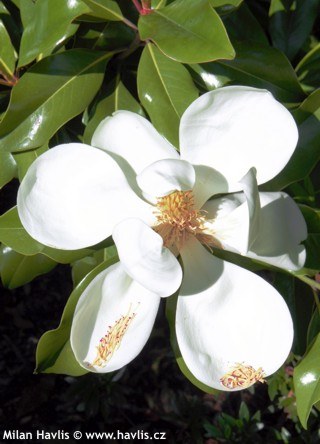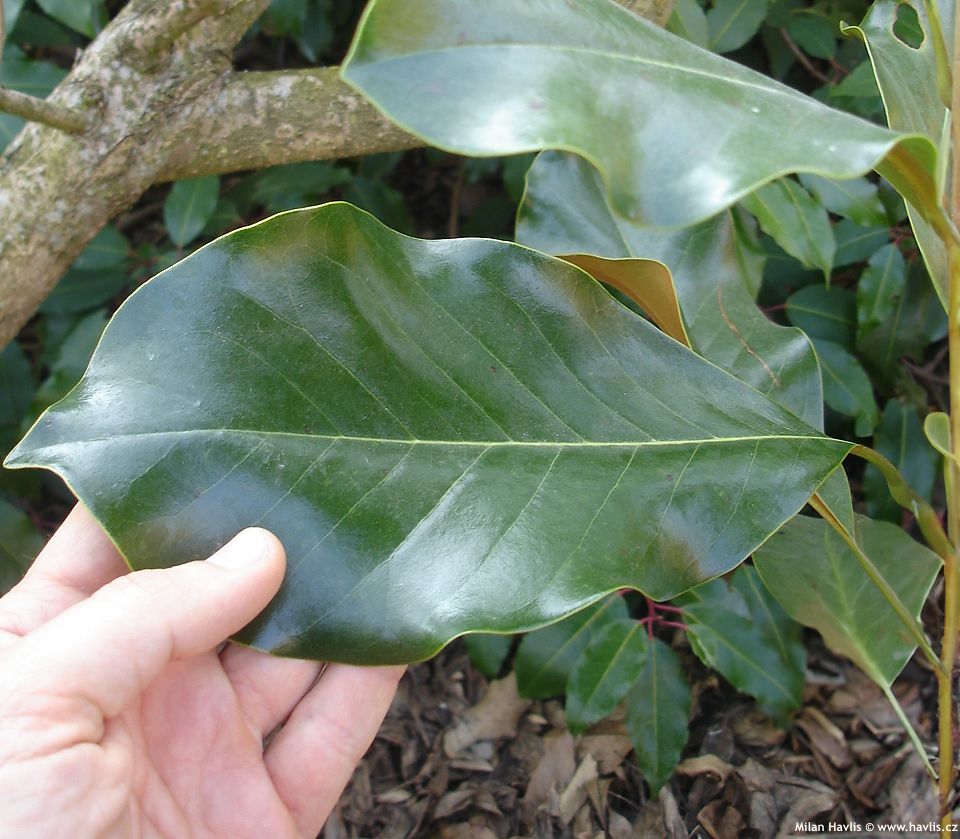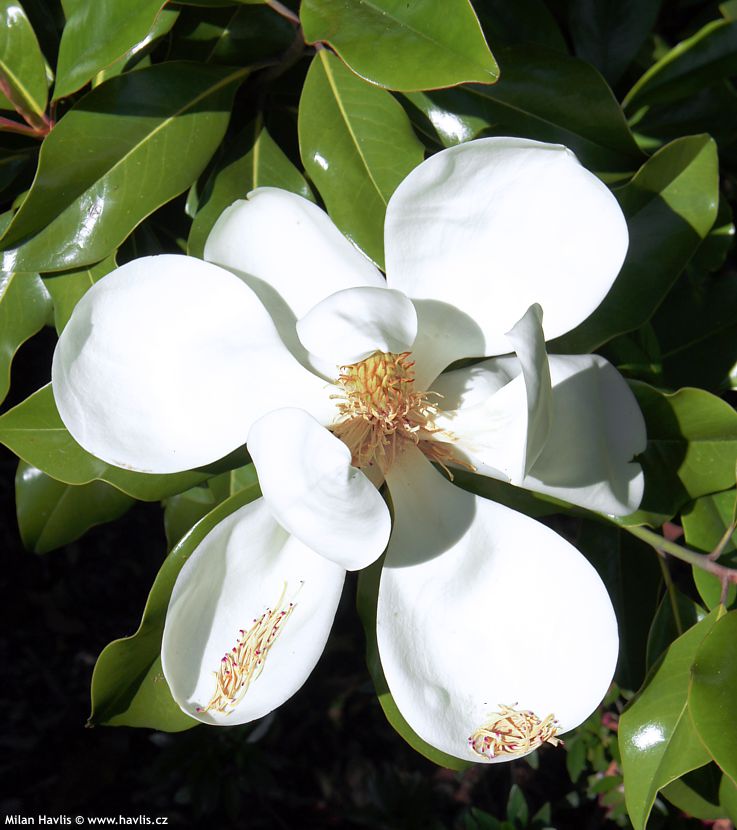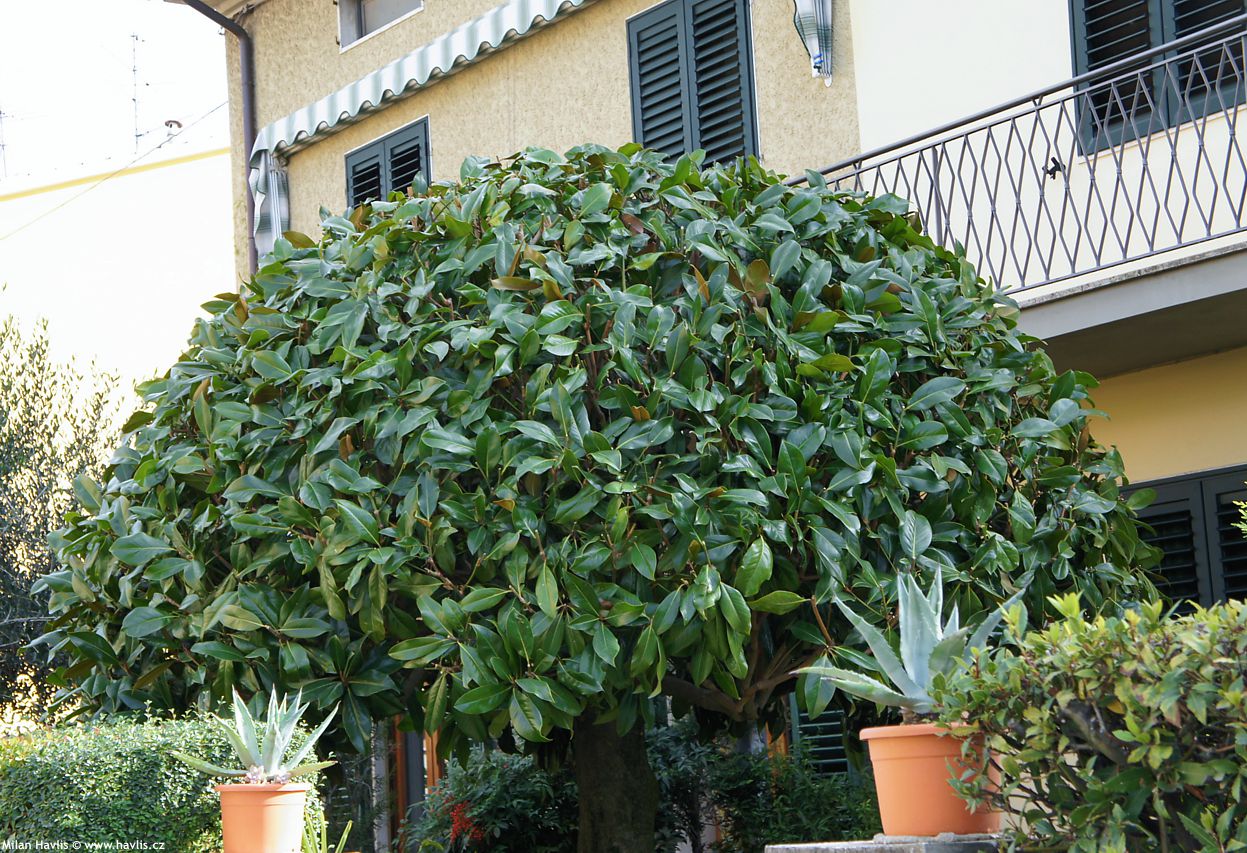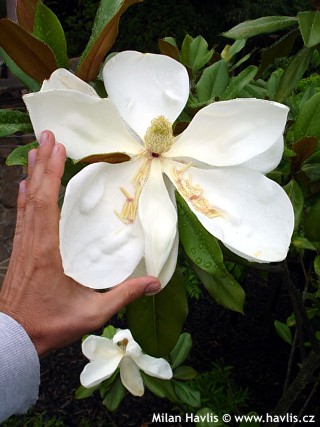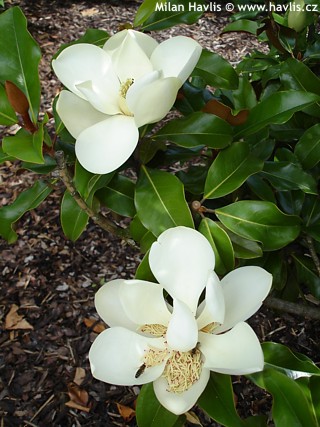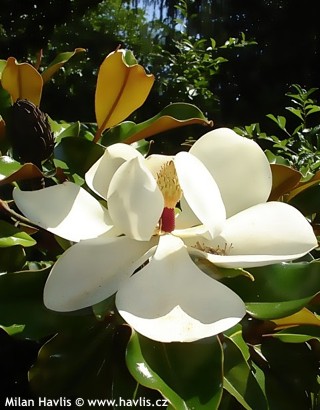Magnolia grandiflora 'EXMOUTH' southern magnolia, bull bay
size/type
taller shrub,taller shrub
usual height
3-6m
usual width
3-4m
leaves
evergreen broadleaf
colour of leaves
flowers
showy
colour of flowers
blooming time
July-August
location
full sun
soil type
acidic (peaty)
soil moisture requirements
evenly moist (dislikes drought)
USDA zone (lowest)
7 (down to -23°C)
winter protection
for zone 5+6

for zone 7

categorized
Magnolia
Evergreen magnolias are the queens of flowering trees. We choose the most beautiful and the hardiest varieties at the same time. Exmouth is a bull bay magnolia developed by John Colliton in Devon, UK, already in the 18th century. However, it seems that it did not spread out much then because at that time French admiral Roland-Michel Barrin of Galissonniére introduced his own variety named after himself in France and some time later it was brought to the UK to decorate aristocratic manors and gardens. It had superior foliage and good hardiness. It took maybe a hundred years that a different sensation was born: magnolia Edith Bogue that survived incredible -31°C in New Jersey, USA. That was a signal for other varieties including Exmouth to be tested under harsher conditions. In the USA it proved hardy to -25°C and became a well selling plant though still a little rare.Description of the plant:
Exmouth bull bay magnolia is notably different from her sisters for the leaves. They are thinner but tough, undulated, a little larger, with thinner film of rusty brown hairs on the undersides. Flowers appear from the first hot and sunny days of summer. They are beautiful as on any bull bay magnolia, creamy white in colour, 20-25 cm across, very fragrant. One flower lasts for 1-3 days only but they pop up continuously one by one. Well established, mature plants can produce buds and bloom for as long as 2 months if the weather is sunny and warm. It grows into a large shrub or a small tree of a rounded conical shape when young and more rounded with age. It does not become a giant but some 6m can be expected. It flowers on mature shoots which are usually the ones from previous year so any form of pruning may significantly limit the number of flowers. Pruning for shaping is not recommended in zone 6, anyway, only if you need to rejuvenate or improved badly branched specimens. As an evergreen, summer-blooming plant it is ideal for planting near swimming pools and patios where you can enjoy summer most.
Finding it a good location is a crucial key to healthy life of bull bay magnolias. Ideal spot is the one with plenty of direct sunlight in summer, protected from cutting winds, and some shade in winter. The soil MUST be well-drained, constantly moist, and preferably acidic to prevent from chlorosis, very rich in humus and possibly some clay in lower parts. It needs a lot of nutrients so fertilizing is suggested in the first few years after transplanting. Use organic matter or slow-release fertilizers with balanced levels of nitrogen. Solely nitrogen-based solutions are only advisable during regeneration phases and should not be used later than end of June. We strongly recommend using mycorrhizal fungi when transplanting.
It is hardy to about -25°C (USDA zone 6) and has survived -27°C with some burnt foliage. Should the temperature drop lower or long-lasting frost is forecast we recommend covering it with white woven only for maximum of a month or so. It should be removed during cloudy weather. In winter provide careful watering in frost-free periods if the ground is not dry and not frozen.
Last update 17-12-2011; 22-02-2017
QUICK PRICE OVERVIEW
CURRENTLY SOLD OUT
WANT TO TRY A SIMILAR PLANT?












